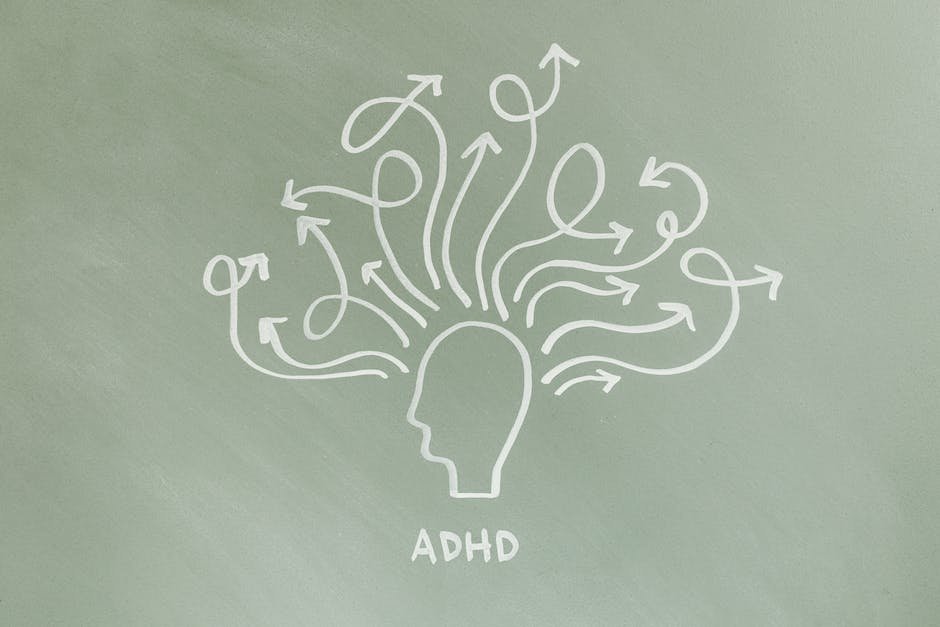
The world we navigate daily is a tapestry of complex sounds, sights, and interactions that can be particularly challenging for individuals with autism. As a condition that affects social skills, communication, behavior, and sensory processing, autism necessitates a distinctive approach to safety—both at home and in the public sphere. This essay endeavors to shed light on the critical aspects of understanding autism and the unique safety risks it brings. Through this exploration, families and caretakers can learn to tailor their living spaces and daily routines to ensure the well-being of their loved ones with autism. We will delve into strategies for creating a safe home environment, identify ways to mitigate risks in public settings, understand the complexities of emergency preparedness for those on the spectrum, and discover educational resources that can fortify community support.
Understanding Autism and Safety Risks
Title: Embracing Safety Awareness in Our Autism Journey
As dedicated caretakers, developing an understanding of safety awareness for our children on the autism spectrum is not just a priority—it’s a non-negotiable part of their well-being. The importance of this topic can’t be overstated; it’s a safety net that allows our kids to explore the world with a bit more freedom and gives us peace of mind in knowing they’re prepared for the unexpected.
First off, children with autism often experience the world differently. They may have trouble processing sensory information, struggle with communication, and in some cases, not be fully aware of dangers that seem obvious to others. This can include anything from not recognizing a hot stove to the hazards of crossing a busy street. That’s why safety awareness is more than just caution; it’s about teaching tailored skills for daily living.
Understanding a child’s unique triggers is pivotal. For many kids with autism, sudden loud noises or a change in routine can be incredibly distressing. This distress can sometimes lead to unexpected behaviors or even elopement—an urgent word every parent of a child with autism gets familiar with. It means a child might wander or run off and become lost. Instilling proactive safety measures like secure locks, alarms, and even GPS devices can serve as vital tools in preventing such scenarios.
Furthermore, communication barriers can pose significant risks during emergencies. Teaching nonverbal communication methods, such as picture exchange systems or using technology like speech-generating devices, can give these children a way to express their needs when words are hard to find. It’s essential for first responders to be aware that a child may not respond to the usual verbal cues and might need a different approach for safe rescue and interaction.
Also, water safety is a crucial topic—many kids with autism are drawn to water but may not understand its dangers. Swimming lessons that specialize in teaching children with developmental differences can literally be a lifesaver. Yet, it’s not just about swimming; it’s about recognizing when water isn’t safe and what to do if they find themselves in a tricky situation.
Lastly, one of the most empowering aspects of safety awareness is community engagement. Building relationships with neighbors, school officials, and local police and fire departments means there is a network of people who understand and can be supportive in times of need. It’s vital to educate these community members not just about autism but also about individual children and their specific behaviors and needs.
Transforming anxiety into action by cultivating safety awareness for children with autism is more than just practical; it translates into confidence for them and a slightly lighter load on those parental shoulders. Remember, it’s not about being overprotective—it’s about giving children the right tools and knowledge to navigate their world safely. Let’s make sure safety takes a front seat on the journey to independence for our loved ones with autism. Keep these conversations going, grow your support system, and let’s safeguard the adventures ahead.

Creating a Safe Home Environment
Crafting Autistic-Friendly Spaces: A Guide to Safe Homemaking
Creating a safe and nurturing home environment is paramount for families, especially when one or more family members are on the autism spectrum. Our homes are our sanctuaries, and with thoughtful adaptations, they can be transformed into spaces where individuals with autism can not only feel safe but also thrive.
Furnishing with Purpose: Soften the EdgesThink soft, think safe! Furnishings with rounded corners can significantly reduce the risk of injury. Consider using corner guards on existing furniture. Additionally, securing bookshelves and heavy items to walls can prevent tipping, a necessity for those with curious minds who may climb or pull on objects.
Flooring: Foundation for SafetyChoose flooring that is both durable and soft to minimize harm from falls. Carpeting can be an excellent choice, providing a cushioned surface. If allergies are a concern, there are hypoallergenic options that maintain a soft surface without compromising health.
Light and Color: Crafting a Soothing AtmosphereHarsh lighting can be overwhelming. Opt for natural light where possible and use filters or dimmable, warm lighting options to create a calming effect. When it comes to color, soothing palettes can help to reduce anxiety and sensory overload. Soft blues, greens, and warm neutrals can be quite comforting.
Soundproofing for SerenityLoud or unexpected noises can sometimes be distressing for individuals with autism. Soundproofing can create a more peaceful environment. Even simple solutions such as rugs, plush furnishings, and acoustic panels can make a significant difference.
Safe Spaces: Nooks for Calm and ComfortDesignate an area in the home as a calm-down space where one can retreat when overstimulated. This can be as simple as a tent, a quiet corner with a bean bag, or a small room with minimal sensory input. Providing this dedicated space allows for self-regulation and a sense of security.
Locks and Alarms: Keeping Wandering at BaySafety measures such as locks on doors leading to the outside, pools, or other hazardous areas can prevent elopement. Alarms or chimes on doors can alert you if someone has opened a door they shouldn’t, providing extra security for families.
Décor with a PurposeChoose décor that doubles as a sensory tool. Wall art can be tactile and interactive, while weighted blankets can provide comfort. Avoid cluttered spaces that could be overwhelming or cause anxiety.
Visual AidsVisual schedules, labels, and signage can help in navigating daily routines and finding items. Utilizing pictures and symbols can assist those who are non-verbal or have reading difficulties.
Empowering Independence: Safe Kitchen StrategiesIn the kitchen, safety locks on cabinets and appliances prevent access to potentially dangerous items. But don’t forget about fostering independence—clear storage bins and easy-open drawers make it easier for individuals with autism to help themselves and engage in cooking activities safely under supervision.
Embracing these adaptations not only protects, but also empowers. With each adjustment, parents and caregivers can create a living space that supports the wellbeing of their loved ones with autism, ensuring they can explore, learn, and simply be, safely and happily within the comforting embrace of home.

Safety in Public Spaces
Navigating public safety for children with autism can be a journey filled with learning curves, yet with the right strategies, it becomes a path of empowerment for the child and the whole family. It’s essential to remain vigilant and adaptable, as public settings can present various unforeseen challenges.
When venturing out, identification is key. Consider having the child wear a discreet ID bracelet or clothing tag that includes contact information and any pertinent medical details. In the event they wander or become disoriented, such identifiers can be a lifeline to getting them back safely.
Creating a ‘social story’ can be particularly beneficial. These simple, visual guides outline what to expect in various public scenarios, such as a trip to the grocery store or how to behave when meeting new people. This preparation can reduce anxiety and increase familiarity, making public outings more navigable.
It’s also important to familiarize local law enforcement and first responders with your child’s specific needs. Many communities offer a registry where parents can provide information about their child’s diagnosis, communication preferences, and potential behaviors, allowing for a more informed and supportive response in case of an emergency.
Rehearsing safety scenarios at home is a proactive way to prepare your child. Practice things like looking both ways before crossing the street, understanding traffic signals, and what to do if they get lost. Role-playing these situations boosts confidence and ingrains safe habits.
To help minimize overstimulation, consider noise-canceling headphones or a favorite tactile object that can help your child self-regulate. Always have an exit strategy in case the environment becomes too overwhelming, and communicate this plan with your child so they know there’s a way to retreat if needed.
Inclusion in group activities builds social and safety skills, but ensure that instructors and leaders are aware of and sensitive to your child’s needs. Structured activities, like team sports or classes, provide a safe environment to develop not just physical dexterity, but also the practice of following rules and staying within defined boundaries.
Finally, don’t forget that peer interaction is not only beneficial for the child with autism, but also for their peers. Promoting understanding and kindness in other children lays the groundwork for a supportive community as they grow. Encourage your child’s peers to be part of the safety network, creating a buddy system that fosters friendships as well as safety.
Above all, remember that each child with autism is unique. Tailoring public safety approaches to fit their individual needs and preferences will help them navigate the world more confidently. Embrace the community, pursue continuous learning, and enjoy the journey of growing and exploring together.

Emergency Preparedness and Response
Navigating public outings and emergencies can be challenging for families with children on the autism spectrum. It’s not just about preparation — it’s about designing strategies that accommodate unique needs and ensure safety. Here are best practices for managing chaotic situations and keeping children with autism safe.
Firstly, it’s imperative to always have a current photo and detailed information handy, just in case a child becomes lost. Additionally, medical alert bracelets can be invaluable for children with autism to help identify them and provide important information to those who may find them.
Developing a personalized emergency plan for various situations such as fires, natural disasters, or medical issues is key. Include in this plan the child’s comfort items and preferred communication methods to assist during high-stress moments. Practice the plan regularly so it becomes second nature.
A crucial element often overlooked is the education of neighbors and community members. Informing those nearby about a child’s autism can make all the difference during an emergency. Provide them with specific ways they can help should an emergency arise.
Consider technology as an ally in safety. GPS trackers attached to clothing or accessories help monitor a child’s whereabouts. There are apps that can also support communication during crises for children who are nonverbal or have difficulty expressing themselves.
Always establish a well-stocked emergency kit—with items personalized for a child’s comfort and needs. That might include favorite snacks, sensory toys, or anything else that can provide a sense of security in an unpredictable situation.
Emergency situations require swift, calm decision-making. Deep breathing exercises and simple, comforting routines can help children with autism manage their anxiety levels. These techniques should be integrated into daily practices so they become a resource during emergencies.
Ensure basic first aid knowledge is up to date. Knowing how to deal with minor injuries can prevent a trip to an overstimulating emergency room. For more serious situations, have a script ready to quickly and effectively communicate a child’s specific needs to medical professionals.
Lastly, advocate for autism awareness within emergency preparation programs and drills. When first responders are trained on how to interact with individuals with autism, it creates a safer environment for everyone involved.
Families with children with autism face unique challenges, but by planning ahead, maintaining open communication, and utilizing resources, families can navigate emergencies effectively while keeping everyone as calm and safe as possible.

Educational Resources and Community Support
Navigating the Challenges of Autism: A Guide to Safety Beyond the Home
While ensuring safety within our homes is paramount, it’s equally vital to extend that vigilance beyond our four walls. Families can tap into various resources and strategies to ensure that their loved ones on the autism spectrum are safeguarded wherever they go. In particular, the approach to emergency situations demands special attention.
Education and collaboration with local organizations play a key role in boosting autism safety. For example, reaching out to fire departments and participating in their community programs can help children with autism become familiar with firefighters and their gear, reducing panic during actual emergencies. Similarly, enlisting the help of organizations such as the Autism Society or local support groups can offer workshops or provide materials on emergency preparedness specific to the needs of children with autism.
Schools are another pivotal resource. Ensuring that Individualized Education Programs (IEP) include provisions for safety measures and emergency responses tailored to a child’s needs is essential. Teachers and school staff who are well-versed in autism can also offer invaluable support and guidance to parents.
Another crucial strategy is leveraging online communities and forums. These can be a rich source of shared experiences and practical advice, ranging from how to handle less urgent issues like elopement to more urgent medical emergencies. Video tutorials, webinars, and e-books are also available from reliable sources and can give families insight into effective preventative measures and crisis management tailored to autism.
For tailored solutions, consulting with occupational therapists can be beneficial. They can offer strategies for managing sensory processing issues that might trigger an unsafe situation. Speech therapists can develop personalized communication systems to ensure that a child with autism can express their needs during critical moments.
Last but not least, exploring insurance coverage for emergencies is wise. Some insurance policies might cover specific therapies, safety equipment, or even counseling sessions for family members, which could relieve some of the logistical and financial burdens during unforeseen events.
While each family’s journey with autism is unique, the common thread is the need for preparation, education, and community support. By harnessing the collective knowledge and experience of professionals, support groups, and fellow families, ensuring the safety of children with autism can become a shared and more manageable responsibility.

Empowerment through education and practical strategies is the cornerstone of promoting safety for individuals with autism. By integrating the insights offered here, families can confidently navigate the challenges that come with autism and create an environment conducive to safety and understanding. With ongoing support from community resources and a commitment to preparedness, individuals with autism can enjoy the same opportunities for exploration and independence as their peers. Ultimately, the onus is on society to adapt, embrace diversity, and ensure that everyone, regardless of neurodiversity, can lead a life guarded by compassion, awareness, and unwavering safety measures.




